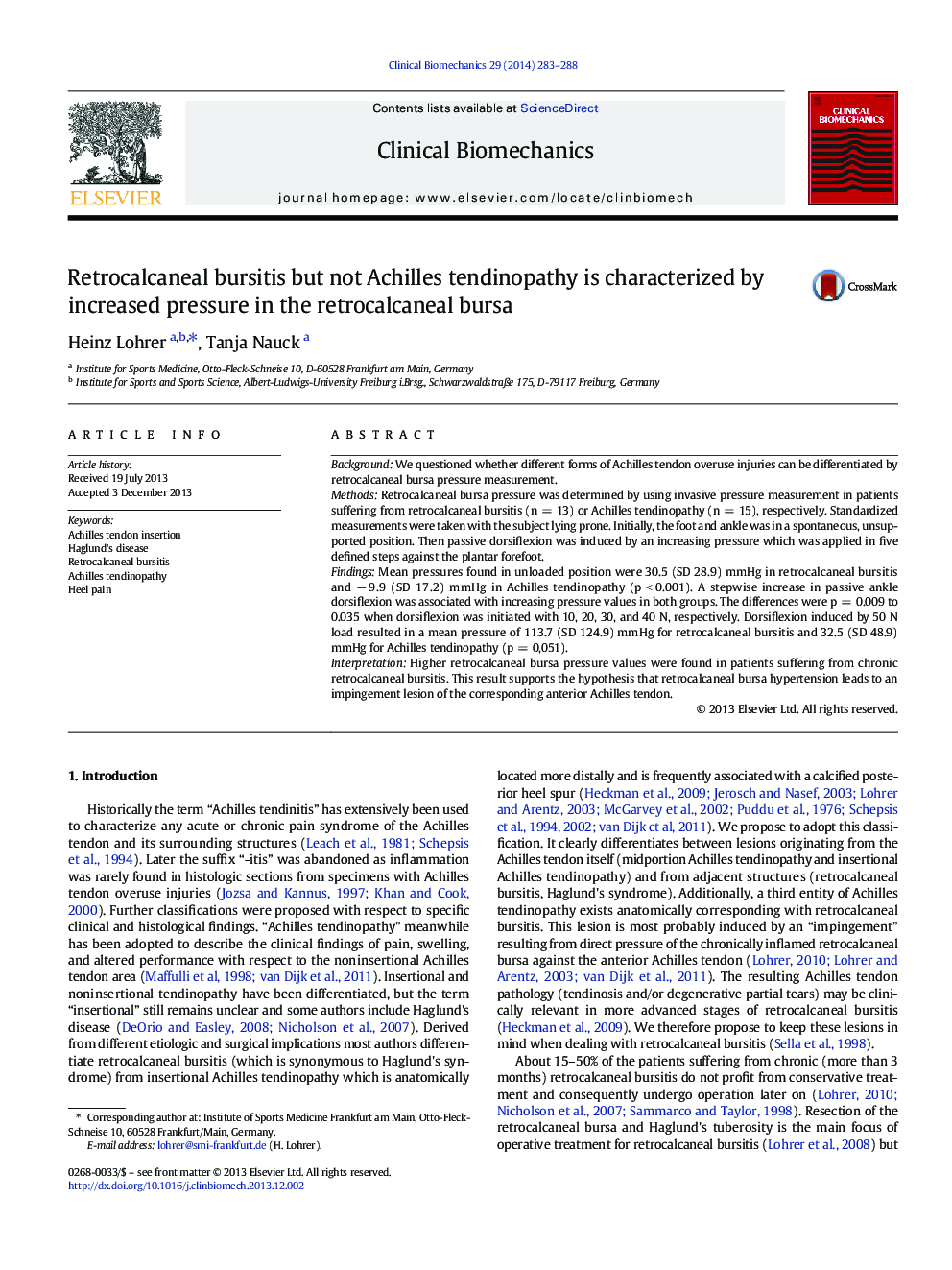| Article ID | Journal | Published Year | Pages | File Type |
|---|---|---|---|---|
| 4050281 | Clinical Biomechanics | 2014 | 6 Pages |
BackgroundWe questioned whether different forms of Achilles tendon overuse injuries can be differentiated by retrocalcaneal bursa pressure measurement.MethodsRetrocalcaneal bursa pressure was determined by using invasive pressure measurement in patients suffering from retrocalcaneal bursitis (n = 13) or Achilles tendinopathy (n = 15), respectively. Standardized measurements were taken with the subject lying prone. Initially, the foot and ankle was in a spontaneous, unsupported position. Then passive dorsiflexion was induced by an increasing pressure which was applied in five defined steps against the plantar forefoot.FindingsMean pressures found in unloaded position were 30.5 (SD 28.9) mmHg in retrocalcaneal bursitis and − 9.9 (SD 17.2) mmHg in Achilles tendinopathy (p < 0.001). A stepwise increase in passive ankle dorsiflexion was associated with increasing pressure values in both groups. The differences were p = 0.009 to 0.035 when dorsiflexion was initiated with 10, 20, 30, and 40 N, respectively. Dorsiflexion induced by 50 N load resulted in a mean pressure of 113.7 (SD 124.9) mmHg for retrocalcaneal bursitis and 32.5 (SD 48.9) mmHg for Achilles tendinopathy (p = 0,051).InterpretationHigher retrocalcaneal bursa pressure values were found in patients suffering from chronic retrocalcaneal bursitis. This result supports the hypothesis that retrocalcaneal bursa hypertension leads to an impingement lesion of the corresponding anterior Achilles tendon.
